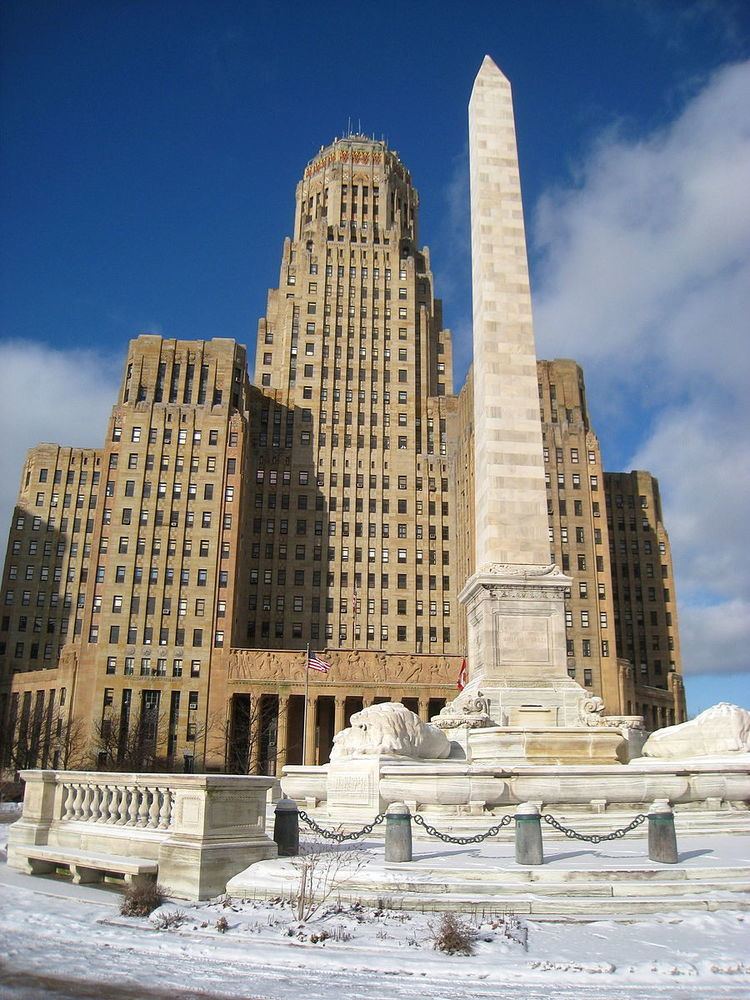 | ||
Buffalo, New York's government is run by a democratically elected mayor and council of nine members.
Contents
Local government
In addition to the mayor, the Buffalo Common Council, and the city departments (expanded below) at the municipal level, Buffalo also serves as the seat of Erie County with some of the 11 members of county legislature representing at least a portion of Buffalo.
Buffalo politics
Buffalo politics is primarily dominated by the Democratic Party. There has not been a Republican mayor since Chester A. Kowal left office in 1965, representing 50 consecutive years of Democrat leadership. Of the previous 13 mayors, dating back to 1934, there have been only three Republican mayors. Currently, the mayor, all members of the Common Council, the city comptroller, and the Chief Judge of the City Court are all Democrats.
Elected officials
Buffalo is the largest of the three cities (Buffalo, Lackawanna, and Tonawanda) within, and is the seat of, Erie County. The municipal government of the City of Buffalo consists of:
State elected officials
At the state level, Buffalo is represented in the New York State Senate and the New York State Assembly by:
The city is divided between two United States House of Representatives Congressional districts:
Buffalo and Rochester are the largest non-contiguous cities in the United States connected by a single congressional district.
City departments
As of October 2015 the Buffalo city government was led by:
History
Buffalo has a rich, and infamous, history with presidential politics. Two presidents hail from Buffalo: Millard Fillmore (13th President) and Grover Cleveland (22nd and 24th President).
In 1910, the city had a Common Council and a Board of Alderman. The alderman were elected from 25 wards to form the Board of Alderman. The board had 23 committees. The Common Council consisted of 8 elected councilors. In addition to the mayor, the voters elected the following executive branch officials, corporate counsel, superintendent of education, overseer of poor, commissioner of public works, the comptroller, treasurer and the three assessor of the Board of Assessors. The comptroller and treasurer were both members of the Board of Finance. The mayor appointed the members of the boards of fire commissioners (of which the mayor is a member), police, school examiners, jubilee water commissioner, pluming and water commissioners and the board of trustees for the Grosvernor Library and the commissioners on the civil service and playground commissions. The mayor also appointed the health commissioner, superintendent of markets, examiner of street engines, inspector of steam boilers, harbor master and oil inspector. The board of health consisted of the mayor, health commissioner and commissioner of public works. Along with his two mayoral appointed directors, the mayor, superintendent of education and another official serves as directors of public library. The city had seven all ex offico boards on which the mayor served on all but the back tax commission, which consisted of the comptroller, counsel and an assessor.
